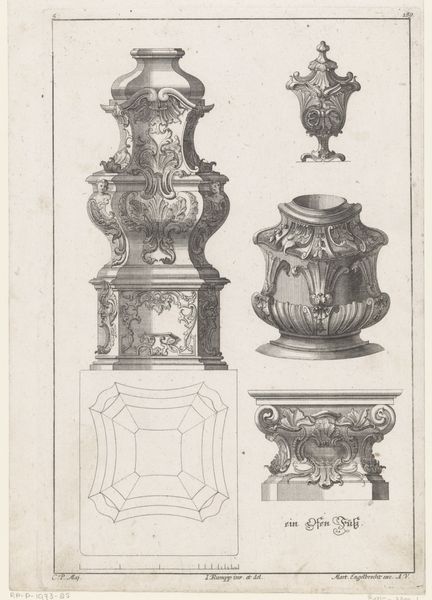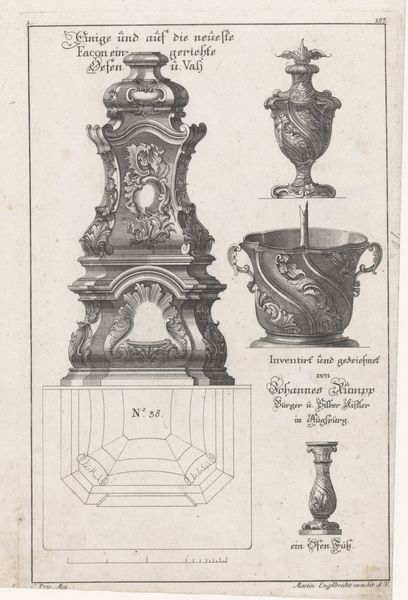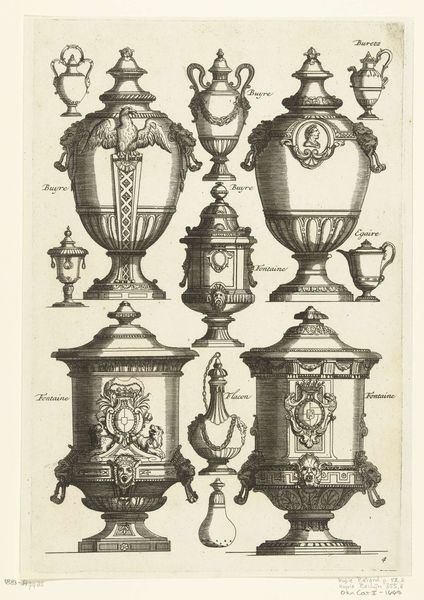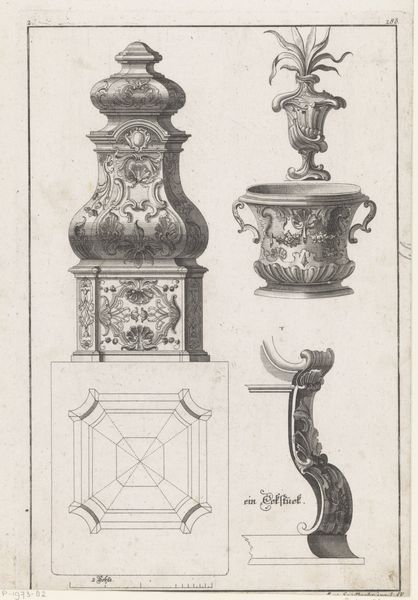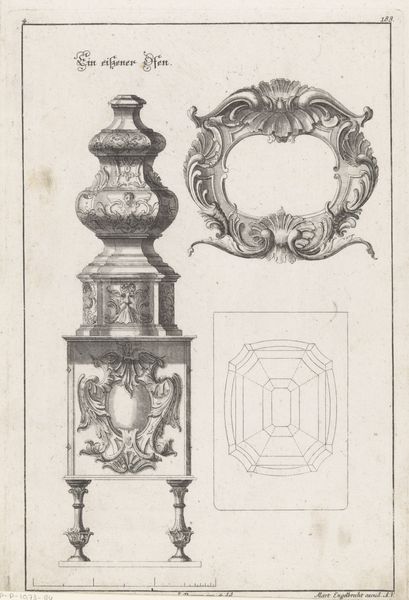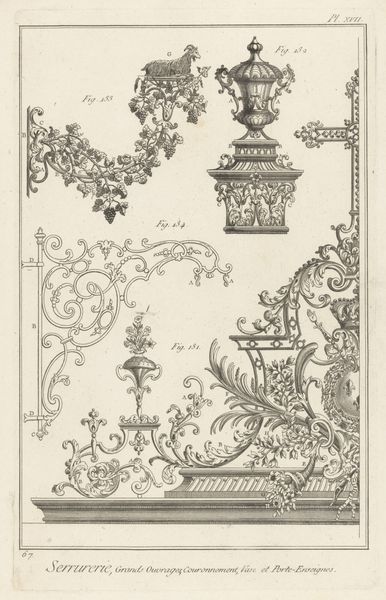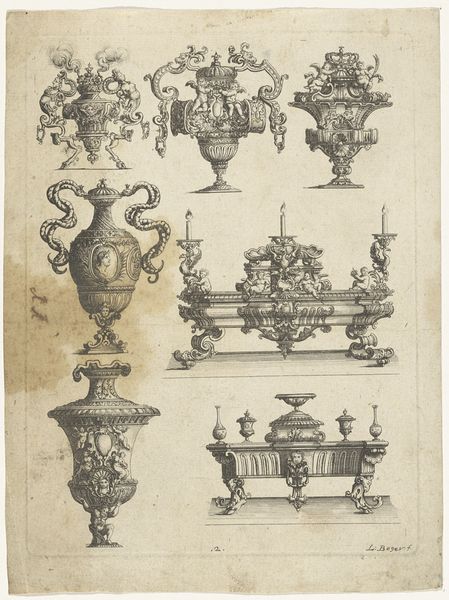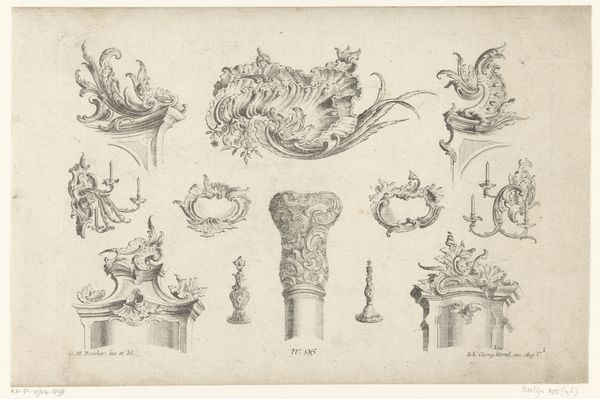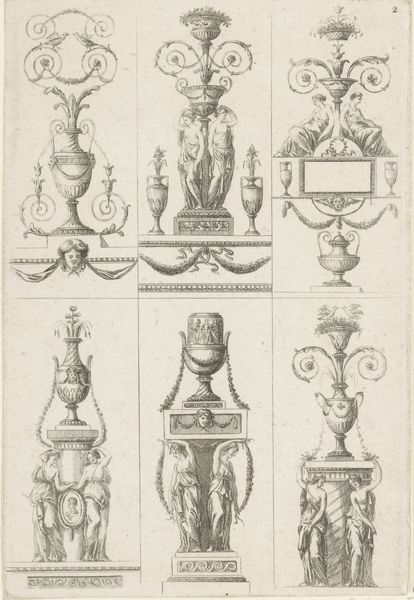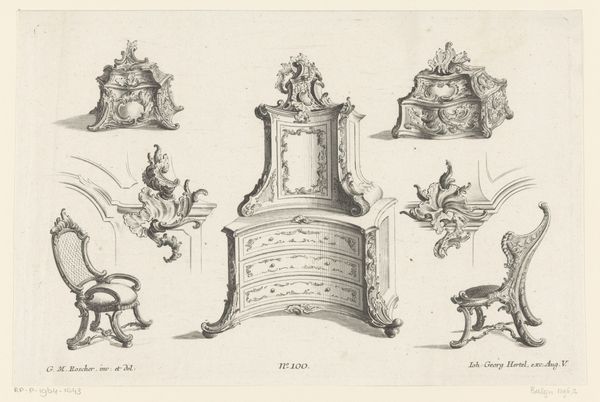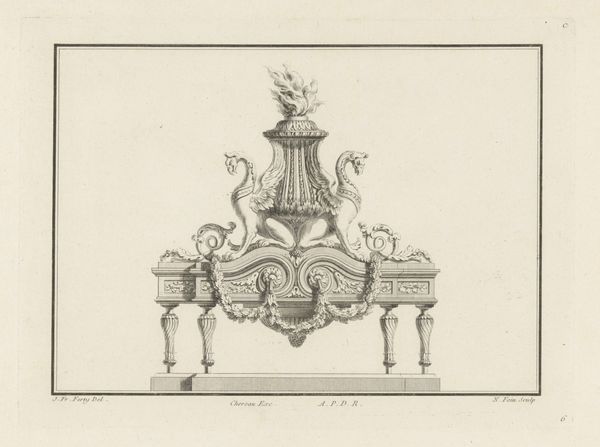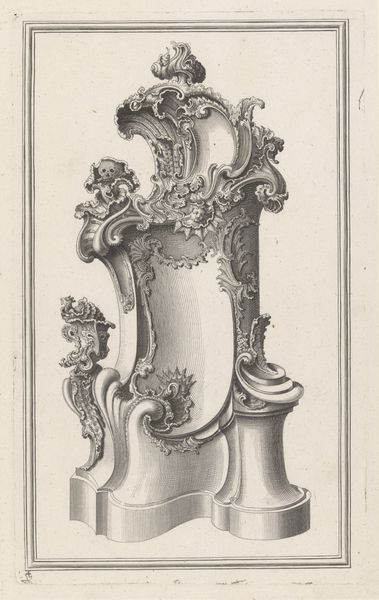
drawing, metal, engraving
#
drawing
#
baroque
#
metal
#
vase
#
form
#
line
#
engraving
Dimensions: height 295 mm, width 198 mm
Copyright: Rijks Museum: Open Domain
Editor: Here we have "Kachel, vaas, pot en poot" by Johann Rumpp, made sometime between 1712 and 1755. It's a drawing, or perhaps an engraving, showcasing several metal objects. There is something so pleasing in how all the images of baroque style vases are organised on the same picture plane. What are some of the key design principles that strike you in this piece? Curator: Form is certainly paramount here. The artist's rendering emphasizes symmetry, balance, and ornate detail. Consider the dominant vase-like object on the left: the eye is drawn to the elaborate scrollwork, then inwards toward the decorative patterning filling its negative space. Note, too, how that linear precision coexists with organic forms. The swirling acanthus leaves give the engraving movement. Do you notice any deliberate repetitions? Editor: Now that you mention it, the scrolling motif repeats across all of the forms presented: the vase on a stand to the top right, the open vessel next to it, even that seemingly isolated "poot," or leg, at the bottom. And they are all contained within the same border that delimits the plane surface. Curator: Precisely. It's the artist emphasizing a unified design language across disparate functional objects. The engraving, even in its linear constraints, almost gives the impression of three-dimensionality by alternating the hatching and stippling effects. It begs us to think of surface versus depth. How do you feel that Rumpp’s composition highlights form over function, or function over form? Editor: I initially saw only their relationship on a visual level. It made me consider how design and functionality were conceived in this specific baroque period, so seamlessly in fact, as they appear in the picture! Thanks to this exercise, I can appreciate the marriage of functionality and aesthetics that defines that era. Curator: Yes, seeing the individual elements allows us to appreciate both their singularity and integration.
Comments
No comments
Be the first to comment and join the conversation on the ultimate creative platform.
